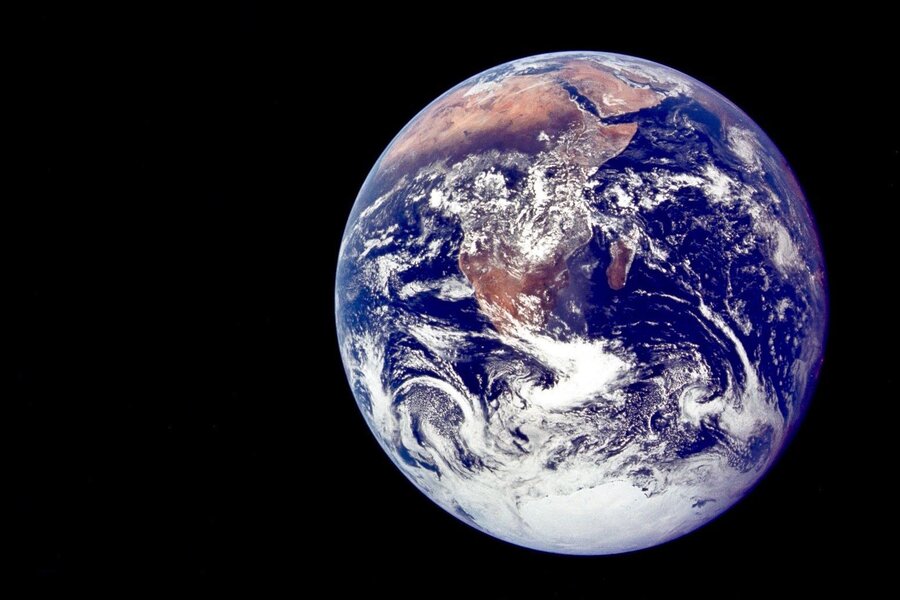3.5 billion years ago, the Earth's climate maybe wasn't so different from today
Loading...
Scientists have long believed that Earth in its early years had an atmosphere and oceans that rose to temperatures as high as 185 degrees Fahrenheit.
But a recent study challenges this theory, instead putting forth the idea that roughly 3.5 billion years ago, at the dawn of life, Earth’s climate was actually relatively cool – not unlike how it is today. Published Friday in the journal Science Advances, the new findings offer a fresh understanding of Archean climate (the climate of Earth when it was first formed) and the content of its atmosphere.
By studying chemical data taken from some of the world’s oldest sedimentary rocks and volcanic materials in the Barberton Greenstone Belt (BGB) of South Africa’s Makhonjwa Mountains, authors Maarten de Wit of Nelson Mandela Metropolitan University and Harald Furnes of the University of Bergen found that early projections of temperatures in marine environments – between 79 and 185 degrees Fahrenheit – may have been overestimated.
“This article focuses on getting a better grip on early ocean temperatures because we like to know how the evolutions of life took place,” Pieter Visscher, a geomicrobiology professor at the University of Connecticut who was not connected to the study, tells The Christian Science Monitor. The findings "are a bit outside our conventional thinking, so I think there's some really good work necessary to come ahead.”
The previous evidence that pointed to warmer temperatures interpreted that seawater temperatures were solely affected by hot fluids from hydrothermal fields, or fissures in the planet’s surface that emits heated water. This new study, on the other hand, proposes that these hot fluids were mixed with cool ocean water.
“What this work has laid to rest finally then is that the temperatures of the oceans at that time were not ‘hot’,” Dr. de Wit tells The Monitor in an email. “Our work shows rather that those temperatures reflect hot fluids emanating from the hydrothermal fields, mixing with cold ocean water, just like we witness today in our deep oceans and shallow seas [and] lakes.”
Specifically, Dr. Furnes and de Wit looked at fields of the hydrothermal, “pipe-like” structures that point to attributes of oceanic crusts. But they also examined glacial deposits, known as diamictites, as well as sulfur minerals in the same environment as the extremely hot hydrothermal fields, according to de Wit. Diamictites and sulfur minerals only exist in the extremely cool temperatures of the deep sea today.
“What is unique in our findings is that there is evidence from both deep oceans and shallow oceans (and atmosphere) that ocean water was cold,” he says. “Since some of the shallow water deposits were subaerial, it follows the atmosphere was also cold.”
But in order to accept that these conditions were true for all of Earth, Dr. Visscher says, similar analysis must be conducted on rocks at different places of the world.
“A lot of my colleagues would look at this and say 'ok, how common is [this phenomenon],' ” he says. “By identifying this system, the hydrothermal fields, we can look at rock records of similar ages at different places – this is a first step, or [the findings] will disputed because it cannot be found anywhere else.”
These new observations, the study says, have some serious implications for understanding not only Archean climate but also life on Earth billions of years ago.
Because the marine and atmospheric temperatures back then are now understood to be much cooler than previously thought, de Wit says, they could have been ideal environments to cultivate life.
“The unique set of rock records preserved in South Africa indicate that Earth, ever since we have records of life on the planet, has been predominantly in a 'Goldilocks' state – not too hot as previously suggested, and not too cold to eliminate life,” he explains, “just right for an evolving biosphere.”








